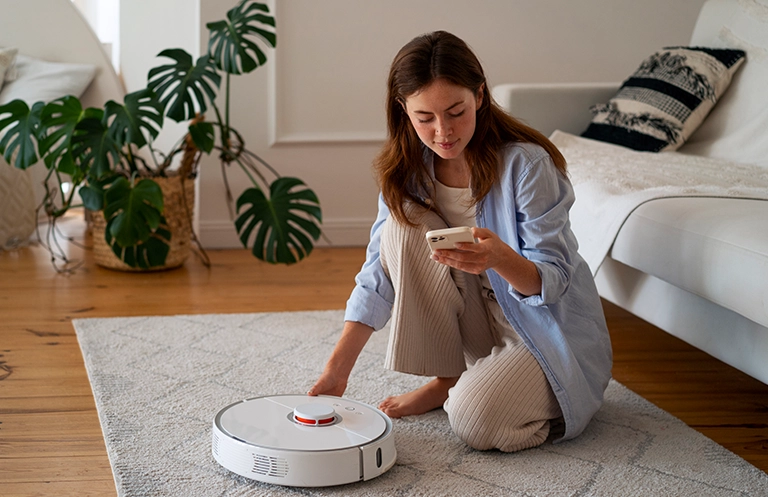Rising energy utility expense is a common concern for households everywhere. In the US, the average household electricity bill stands at $114 per month currently, varying as much as up to $188 per month in regions like Hawaii. Overconsumption of energy resources is neither constructive to our environment nor the wallet.
Considering how often we forget to switch on/off the electricity equipment, there have to be mechanisms which can control electricity consumption without manual means. In this blog, we will discuss how sensors and data harvesting can be used for efficient management of electricity resources. Imagine, sitting back at home and smart technology solutions working on our behalf to help save and optimize the electricity?
IoT sensors in action:
Here’s a common energy waste situation we all can identify with. Sometimes, while watching a program on TV, people fall asleep and the device stays on for the whole night. With the use of smart sensor controls, it can be possible to detect the movement/gesture of the person falling asleep which would automatically turn off the TV after some time. Use of automated schedulers and sensors for TV watching is a good energy saving technique. Using thermostats (communicate wirelessly through the internet), one can manage updates in cooling and heating at the flick of a finger. Latest smart thermostats can be controlled efficiently using mobile gadgets such as tablets and smartphones With wide range of sensors available to detect multiple useful parameters such as human presence, temperature, pressure, presence of some specific gas and much more, it is really meaningful to leverage this these technologies driving IoT for optimizing building automation. Advantage of sensor-based occupancy detection in combination carbon dioxide transmitter is a good use case. CO2 transmitter with relay automatically generates heat. And whenever a person enters and leaves the room, it will automatically sense and turn on and off. This simple HVAR controller system can help conserve a lot of energy. Sensors can already identify changes in temperature whenever human beings enter a room, and program the smart lights to be turned on. With Internet of things prompting the rise of smart technology, one can rely on integrated sensors and automated systems to weave in multiple gadgets and functions for each othersbenefit.
The results of data harvesting
With data harvesting, one is in a position to make better assessment of their needs. IoT is now being used to boost plant growth, indoor air quality, and even enhance the functions of refrigeration units, trash compactors, rooftop solar power plants in varied industries. The evolving smart sensors, including wireless sensors, nano-sensors, MEMS sensor, and others are showing the path to an integrated future.
When it comes to the energy providers, IoT has already opened new avenues for them to supply, monitor, analyze and price the energy based on various parameters. Automation in smart meters for data collection in terms of usage patterns and trends across the geographies as well as other demographics has led to an exponential reduction in the time and human energy required to collect data from the meters. This sensor data can now easily be sent over to the cloud for a centralized analytics and visualization enabling the energy providers to ensure load management, uninterrupted supply and also optimize their pricing structure based on usage patterns and peak loads. This is an ideal win-win IoT deployment scenario for energy consumers and the providers!
Benefits of IoT and Data Harvesting for Energy Efficiency:
• Energy saving operations with sensors
• Falling effect of global warming
• No need of manual intervention
• Human presence detection system
• Versatile wireless tracking systems
• Interior light reduction control
• Better functions with existing wiring and electrical systems
With the advent of sensor-integrated smart meters which act as smart edge devices, there are greater benefits for energy distributors when it is properly leveraged in conjunction with cloud enablement and analytics.
Predictive modeling demand & generation response, expenditure & costing, optimized resource management has really changed the complete paradigm of energy consumption as well as energy distribution.
We are witnessing a lot of electricity-related changes, like increased energy demand, per capita electricity consumption, new energy sources like solar, etc. In short, our final aim is to make energy consumption lower without hampering our daily life. An enormous amount of data is collected from sensors which are flexible enough to drive actions that can increase feasibility and cost efficiency. The changing world needs smart and self-adaptive IoT Solution and Services that align with what is required effectively and provide optimum benefits too.
Check eInfochips white paper on how energy and utility providers can unlock potential service opportunities using a reliable predictive analytics solution across all stages of the business cycle.













